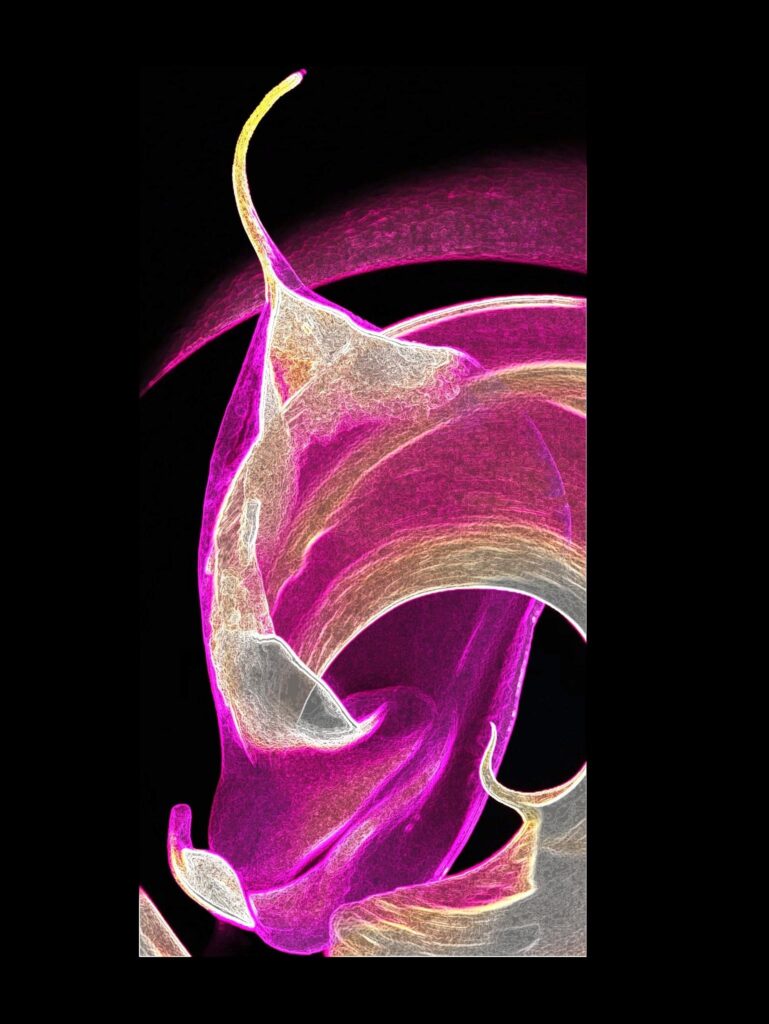
by Carella Keil
Four Ragam
Kanakangi
She knows from the jaggery melting in the uruli,
it is a girl. The tidal wave washes in the dream,
the demoness shapes cell upon cell and the light dances
on the string of lamps in the temple as she glides fistful
of radiance in the uncut gems at her throat—the gold
smelts serration of syllables into vortices of notes.
Ratnangi
In the clearing sequestered beyond the tall grass stalks,
she polishes the secrets of the breeze in the stones;
the red earth stains her feet and soaks into her nails,
the crimson blush as if the heart bleeds when the cornea
explodes like gemstones with hundred wrinkles in the faces
of women who toss black and red grains into the lake.
Gnanamurti
She could not help it, the wings flexing and the levitating,
the earth slipping away, the waves lapping, gurgling,
its speech like a child’s: soft rumbles of joy tuned
in perfection to the formation of geese tearing the sky
in a sweep like the whirring wipers arcing again
and again to uncover the face behind the misted glass.
Vakulabaranam
From the bottomless silence of the river, the currents eddy
in a helix of rapture when her fingers rifle the blue lotus
that clouds from the swirl of her voice ascending to grasp
the pollens exploding from the crown of vakula flowers—
crescents of moon woven in strands browned with undying
fragrance on her skin blue-greened from his touch.
NOTES
As a young boy, my father grew up in Kumbakonam, a town in Tamil Nadu, South India, famed for extraordinary Carnatic musicians. In Carnatic music, a composition is the lyrical content of a song set to a ragam which is the musical scale of a specific set of notes that is explored, embellished, and improvised by a musician. Ragam is therefore the melodic framework and there are hundreds of them derived from the seventy-two primary ones. These are a poetic response to my musical experience of four ragam – Kanakangi, Ratnangi, Gnanamurti, and Vakulabaranam.
Uruli, in Tamil, refers to a bronze pot or wide-mouthed bowl used for cooking.
Vakula flowers, star-shaped and fragrant, blossom in the months from March to July.
Uma Gowrishankar is a writer and artist from Chennai, South India. Her poems have appeared in online and print journals that includeYearbook of Indian Poetry in English 2020-21, Poetry at Sangam, City: A Journal Of South Asian Literature, Qarrtsiluni, Vayavya, Buddhist Poetry Review, Silver Birch Press, Curio Poetry. Her full-length collection of poetry, Birthing History, was published by Leaky Boot Press.
Carella Keil is a writer and digital artist who splits her time between the ethereal world of dreams, and Toronto, Canada, depending on the weather. Her art has appeared recently on the covers of Glassworks Magazine, Colors: The Magazine, and Frost Meadow Review, and is forthcoming on the cover of Straylight Magazine. Her art has also been featured in Skyie Magazine, Existere, Burningword, Chestnut Review and The Field Guide Poetry Magazine. instagram.com/catalogue.of.dreams twitter.com/catalogofdream.